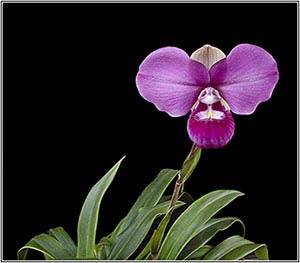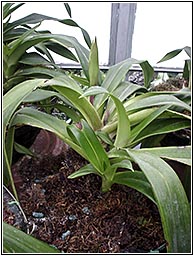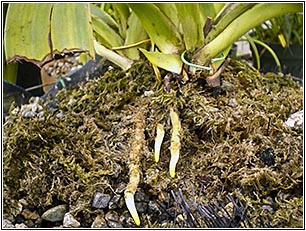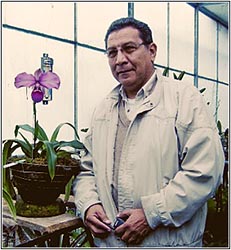|
Orchid
News # 34
|
|
XIX WOC
|
Phragmipedium kovachii,
Beyond de Discovery
by
Alfredo Manrique
 |
After
years of rumors about a new Phragmipedium species
seen in the eastern slopes of the Andes in
the remote highland jungle in northern Peru, Phragmipedium
kovachii was finally described in June
of 2002 The species is found as endemic in
the district of Pardo Miguel, Province of
Rioja, San Martin, Peru. This part of the
country is well know about its richness in
orchids much of them not yet identified. |
OM:
Organic matter A
foliar analysis of developed leaves was carried
out, producing the following results:
According
to the results, Phragmipedium Kovachii grows
in an alkaline soil, with ample drainage,
low in nutrients, with high consumption of
Calcium, Magnesium, as well as Iron.
Culture: Crushed
stones, particles of 0.8cm 40% To
have a continuous calcium source, 20% of
the stones in the soil mixture are limestone
rocks, while the rest is granite. Propagation: |
|
Alfredo Manrique Owner
of Centro de Jardinería
Manrique. in business since 1979. |
|
|
Any
kind of reproduction (print, digital or
anyone) of any type of material of this
site: texts, layout, photos, images and
others - is
strictly forbidden without previous written permission of the authors. Any solicitation or information by the e-mail:bo@sergioaraujo.com |


